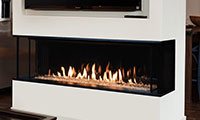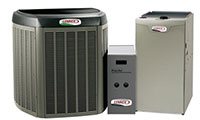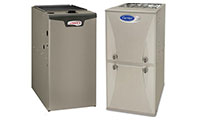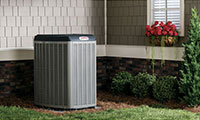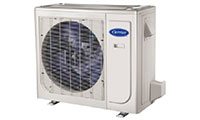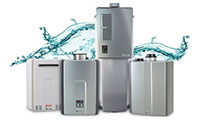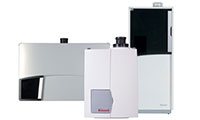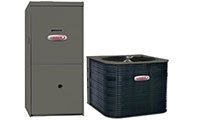When purchasing a home comfort system, it is important to know what some of the numbers mean especially when it comes to efficiency ratings as they are directly related to savings on your energy bill.
What is SEER?
When it comes to Air Conditioners (and air source heat pumps), the most prominent energy rating we encounter in Canada is the SEER. SEER stands for Seasonal Energy Efficiency Ratio and it is based on a standard set by the air-conditioning, heating, and refrigeration institute, an american trade organization. The calculation is simple; the amount of cooling done by the A/C or heat pump during a typical warm season divided by the total electric energy spent during that same season. The higher the SEER, the better.
[swf src=”http://www.carrier.ca/assets/flash/seer_en.swf” width=320 height=170]
The Canadian government requires all new air conditioning products to have a SEER of at least 13, that is why it is crucial to replace your old unit if it has an energy rating below that. A SEER of 18 and above is what is normally considered as high-efficiency.
What is AFUE?
The Annual fuel utilization efficiency rating, or AFUE rating is to gas furnaces what SEER is to Air Conditioners. It is defined by a standard set by the American Society of Heating, Refrigerating and Air-Conditioning Engineers, and it is a percentage of how much of the gas that the furnace consumes, in average, is actually used to heat up your home during the whole cold season. Just like the SEER; the higher, the better. Typically, a AFUE rating in the 95% region and above is considered high-efficiency.
[swf src=”http://www.carrier.ca/assets/flash/afue_en.swf” width=320 height=170]
What is HSPF?
Because air source heat pumps can heat your house as well as cool it, they have two efficiency ratings associated with it. the SEER (explained above) for when it is cooling the house during summer and the Heating Seasonal Performance Factor, or HSPF (based on the same standard as the SEER) during the cold months when it helps heat up your home. Again, just like the SEER, a higher HSPF means more savings. High-efficiency heat pumps are typically given a HSPF of 9.0 and above.
[swf src=”http://www.carrier.ca/assets/flash/hspf_en.swf” width=320 height=170]
And speaking of heat pumps…
A home comfort system consisting of a furnace and heat pump typically give you the highest energy savings but it is important that all of the components are matched correctly for higher energy efficiency, otherwise the individual units may never be able to perform at their optimum level of efficiency. The outdoor units need to be matched properly with the indoor units – indoor coils, air handlers, etc – in order for this to happen.
How to read those EnerGuide tags?
As Canadians, due to our particular weather conditions, our energy needs and efficiency requirements are naturally different than those that apply to americans. It is with that in mind that the Canadian government has implemented the EnerGuide tag system, containing relevant information when we purchase either new equipment and also new houses. The picture above has the breakdown of a typical EnerGuide tag:

- The annual energy consumption of the appliance in kilowatt hours. The lower the number, the better.
- The energy consumption indicator shows you how this model compares to others in its class. The bar below the indicator gives the energy efficiency range for this class of appliance. The further the indicator is to the left end of the scale, the better.
- This bar shows you the energy consumption of the most and least efficient appliances in this class. In this case, the most efficient comparable model consumes 564 kWh per year while the least efficient uses 972 kWh per year.
- This tells you the type and capacity range of similar models compared.

